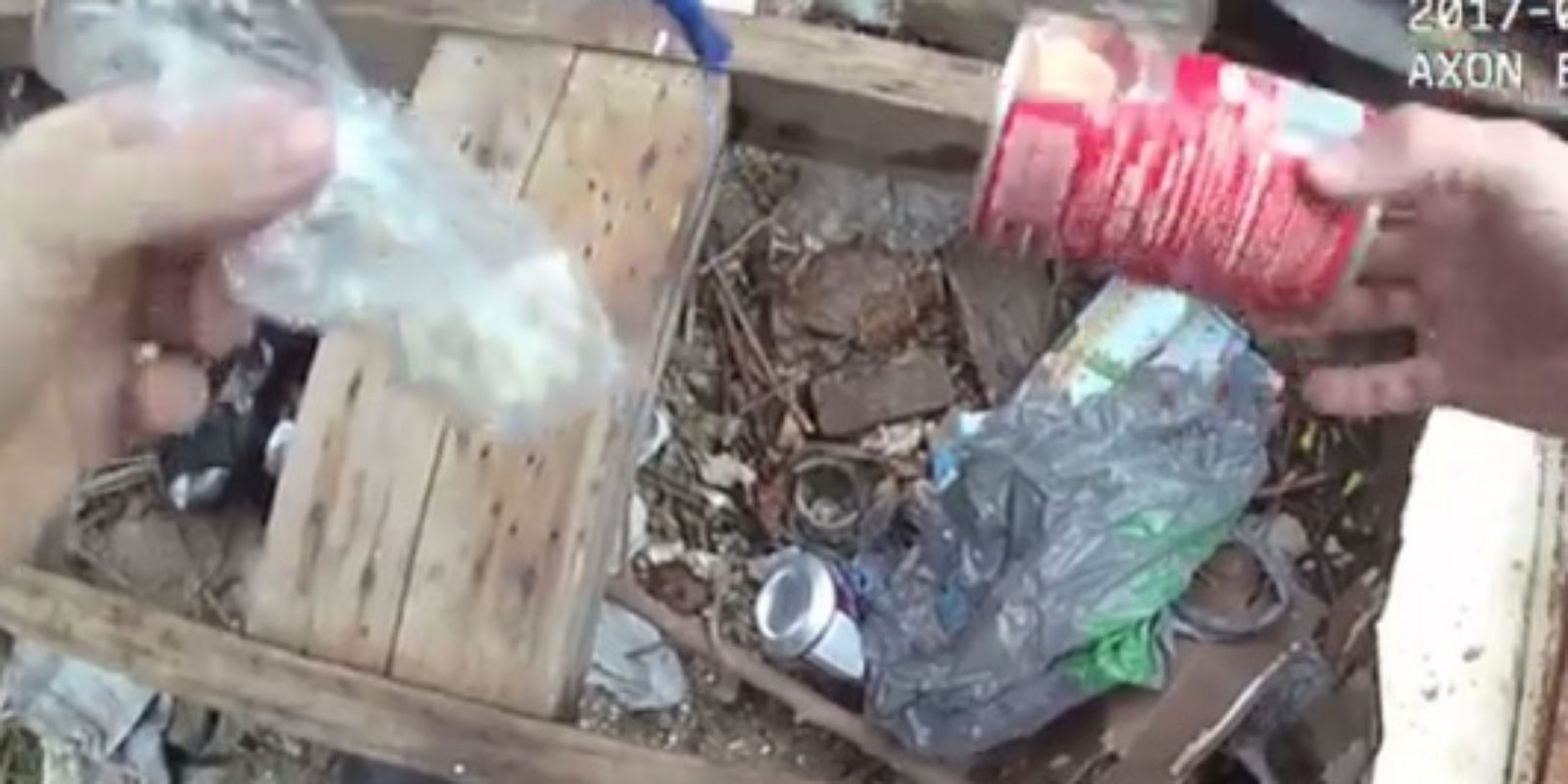In July of 2017, video footage surfaced online that showed a task force officer with the Baltimore Police Department tampering with evidence on a crime scene. The video, recorded from the officer’s body camera, explicitly shows the officer planting a bag of unidentified drugs into a tin can found at the scene and then returning moments later, pretending to intercept the substance.

In response, the video sparked outrage on social media, as citizens within and outside of Baltimore alike drew connections between the video and corruption in America’s criminal justice system; it highlighted a blatant abuse of power and the kind of institutional racism that currently plagues the justice system.
All of the commentary surrounding the video mostly involved skepticism and disappointment from Baltimore’s citizens and other Americans. These criticisms weren’t exactly unjustified either, as BPD has struggled to maintain a positive image throughout the last year based on similar incidents.
In one instance, seven officers were accused and indicted on charges of robbery. The officers were said to be pulling citizens over and stealing possessions and money from them, anywhere between $20 – $200,000. It is reported that these actions have affected over 2,000 criminal cases, which may now potentially be thrown out completely.
While that trial is still ongoing, another case from 2016 shows body camera footage of several officers “manufacturing evidence,” which was later dismissed on grounds of police misconduct. In the last five to seven years, police misconduct has cost the department $13 million.
Regarding the most recent video, 29-year-old Officer Richard Pinheiro could now be facing up to three years in prison and additional fines because of his actions. Pinheiro was indicted on criminal charges of tampering or fabricating physical evidence, leading the charges on the original suspect to be dropped.
Although the video depicts Pinheiro undoubtedly recovering crime scene evidence that he planted himself, whether or not his motives were intentional is still unclear. In a statement given to The Baltimore Sun, the defense attorneys on the case said that “Pinheiro was simply trying to document the recovery of the evidence that he had previously already recovered.”
Others speculate that Pinheiro was unaware of the body camera being on. Plausibly, the video could very well be footage that was accidentally captured, as Pinheiro thought he had turned the camera off when in actuality he had not.
At the time of the event, it was typical for body cameras to recover footage from the incident being recorded as well as an additional 30 seconds both before and after the time of manually initiating recording. With that, it is almost indisputable that Pinheiro was unaware of the camera recording. Otherwise, the extra footage would offer something other than his suspicious digging and yelling back and forth with his fellow task officers.
The other two officers depicted in the video, whom Pinheiro calls out to after recovering the evidence, did not receive any charges. While Pinheiro was granted unpaid suspension after the video’s release, the two other officers have been temporarily suspended from being on task in the community, but are still working internally.
After several mishaps with body camera footage leading to unexpected outcomes of pending cases, new regulations have been put in place by the Baltimore Police Department that will ensure that the whole recordings of incidents will be captured on the camera instead of only the additional 30 second time slots that were allotted before.
While this may seem like a step towards newfound transparency and precaution by the department, they are also working on different ways to restrict public access to body camera footage. In response to the large number of cases dropped throughout last year, two Baltimore councilmen proposed the new securities in order to uphold the safety and privacy of victims.
But, what’s so frustrating about this decision is that withholding videos will only further enable any ongoing police corruption. Body cam videos have proven themselves effective in allowing the public to hold police accountable for their actions and also maintaining a check on incident procedures. In some right, public access to that footage is necessary and frankly, the citizens of Baltimore deserve at least that transparency.
Then Baltimore Police Commissioner, Kevin Davis, was discharged from his position shortly after the video was released. Based on these events and a report from the Justice Department that noted recurring instances of harassment, discrimination and abuses of power in the Baltimore Police Department, Baltimore Mayor, Catherine Pugh, was steadfast in finding someone new to fill the position.
Radley Balko, a criminal justice reporter of the Washington Post, notes the findings of the investigation into the department as one of the worst he’s ever seen. In fact, with Baltimore’s Police Department under siege, it begs the prospect of similarities between one Baltimore’s police force with others across the nation.
Since its inception in the 1800’s, policing in America has been upheld as a means of combating “disorder” through scare tactics and force. Police forces in the south, for example, were originally called “Slave Patrols” and they were tasked with capturing and returning slaves, most times in overly violent and abusive manners. Since then, the police state has built upon this terror-ridden past to create civility amongst the people it polices, especially in predominantly black and brown neighborhoods.
This history of abuse and unchecked power has ultimately created an environment where Officer Pinheiro is comfortable fabricating evidence, and he was only checked for his actions through the body camera. More than anything, Pinheiro’s actions validate the absolute need for body camera footage and the public’s access to it.
It’s no question that in urban mega centers such as Baltimore, police brutality and abuses of power are a serious and pressing issue. Baltimore’s black population is 63% and there was a total of 987 people fatally shot and killed by the police last year alone. Nearly a quarter of those individuals were black.
But, amidst all of the outrage surrounding the events, and the reflections of what has become of the criminal justice department, it is time to take a serious look at law enforcement in the very communities people live in. It’s time to reconsider a system that has long cast off the safety of black and brown individuals in disproportionate numbers, all through the tactics seen in these cases that are being brought to light from the Baltimore Police Department.
Only time will tell if a future where protecting and serving is no longer an excuse for unnecessary violence is possible, but with police departments such as Baltimore’s in constant discord with the communities they serve, now is the time to begin towards that future.

















